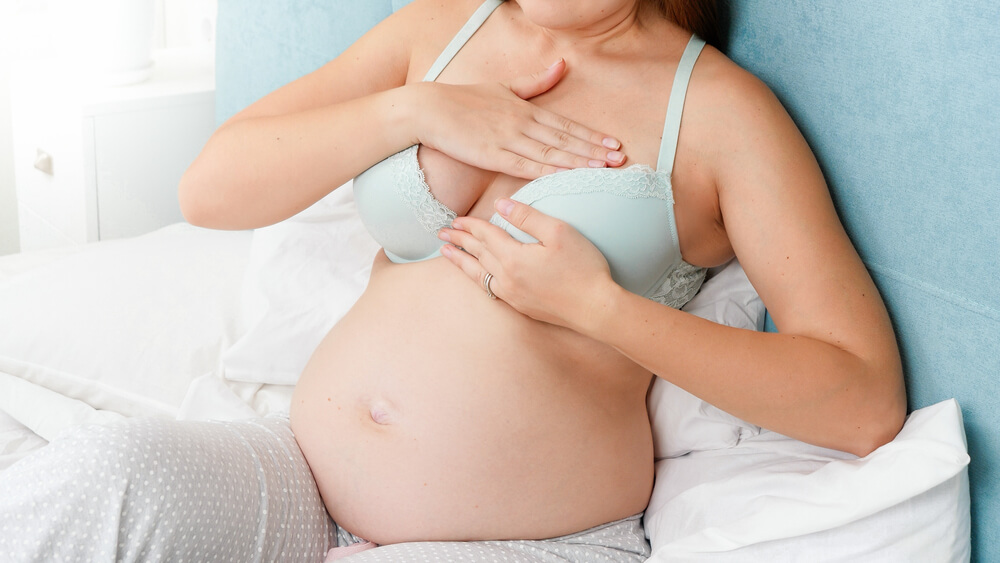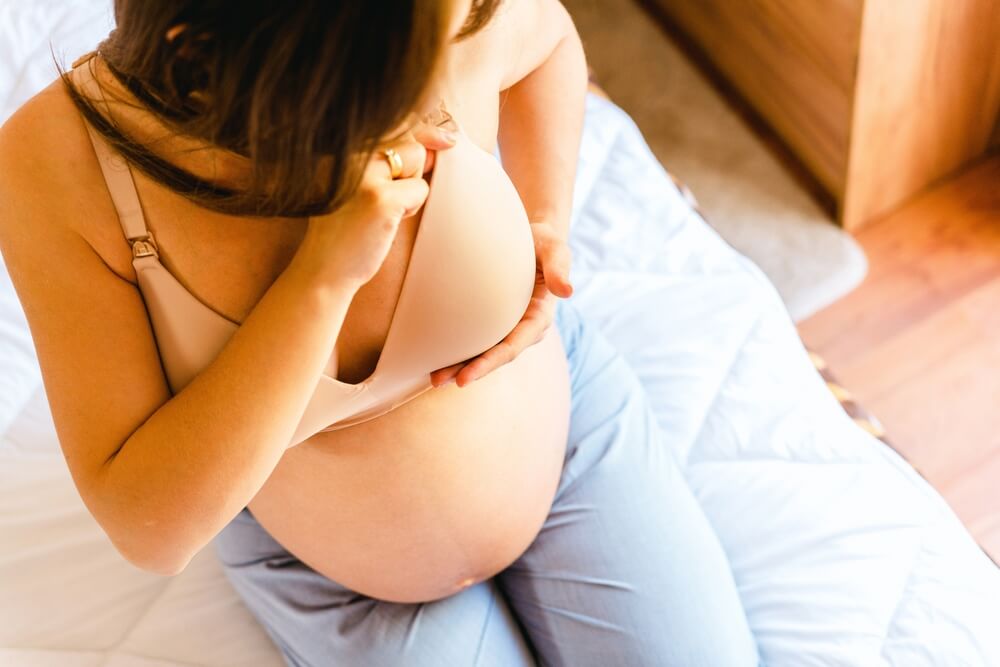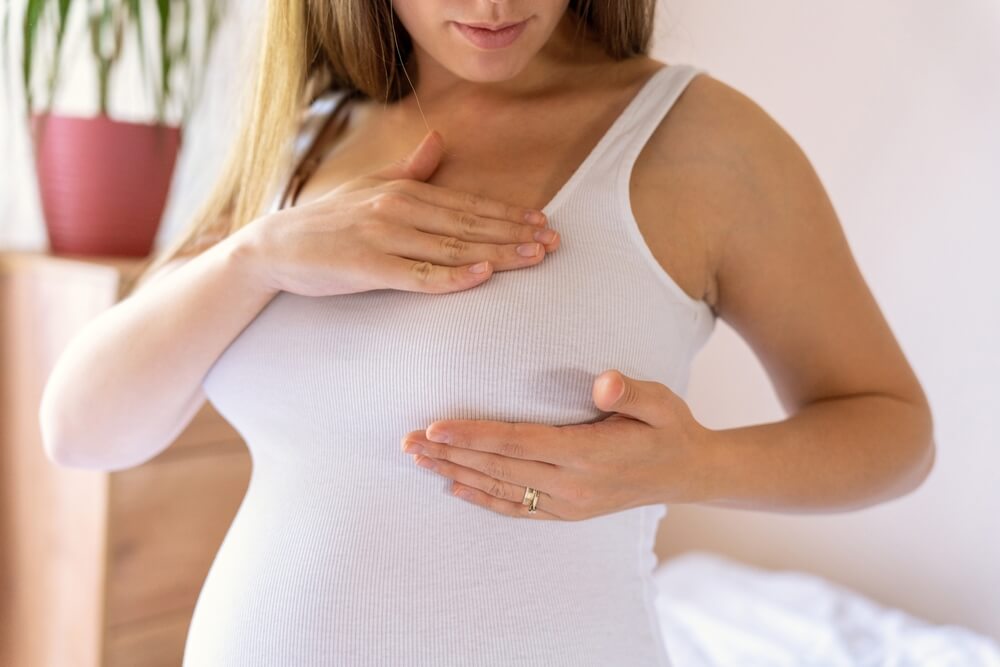Pregnancy is a transformative journey that brings about a multitude of changes in a woman’s body. One of the most remarkable and visible changes occurs in the breasts before and after pregnancy. These changes are not just physical but also essential for the nourishment and care of the newborn. In this blog, our Breast Care Center Miami experts will delve into the fascinating realm of breast changes during and after pregnancy, addressing common concerns such as breast lumps during pregnancy, nipple discharge, bra sizing challenges, and post-pregnancy breast issues.
Stay Alert to Any Breast Changes in Pregnancy
Staying breast-aware during pregnancy is crucial for both the health of the mother and the unborn child. Regular breast self-examinations can help in identifying any unusual changes. While breast changes during pregnancy are expected, any new, persistent, or concerning changes should be discussed with a healthcare provider. Being proactive can ensure timely detection and management of any potential issues.

How Do Breasts Change During Pregnancy?
The journey of pregnancy brings forth a symphony of hormonal changes that impact various aspects of a woman’s body, including her breasts. The breast changes in pregnancy are primarily governed by hormonal fluctuations. These hormonal shifts lead to increased blood flow, enlargement of mammary glands, and heightened sensitivity. The areola, the darker area surrounding the nipple, often becomes larger and darker in preparation for breastfeeding.
The breasts before and after pregnancy undergo dynamic changes. Before conception, the breasts might be considered relatively static structures, but as pregnancy progresses, they become centers of remarkable transformation. Hormonal changes are the driving force behind these changes, particularly the increased levels of estrogen and progesterone. These hormones work in harmony to promote breast tissue growth and prepare the body for the demands of breastfeeding.
Are Breast Lumps Common During Pregnancy?
Breast lumps during pregnancy can cause significant concern, but they are often a result of hormonal changes and increased breast tissue. These lumps are typically benign and related to conditions such as fibrocystic changes or hormone-related cysts. However, any lump should be evaluated by a healthcare professional to rule out any potential issues. Regular self-exams and open communication with a healthcare provider can alleviate worries and ensure proper care.
It’s important to note that experiencing breast lumps during pregnancy is relatively common. These lumps are often due to hormonal fluctuations and increased blood supply to the breast tissue. In most cases, these lumps are benign and harmless, such as fibroadenomas or cysts.
What About Bloody Discharge From the Nipple?
Nipple discharge, even if it contains blood, can be relatively common during pregnancy. Hormonal fluctuations and the preparation of the breasts for lactation can lead to such occurrences. However, any unusual or persistent nipple discharge should be promptly reported to a healthcare provider. While it’s often benign, a thorough evaluation is essential to rule out any underlying concerns.
Experiencing nipple discharge, including blood, during pregnancy can understandably cause alarm. However, it’s important to understand that the vast majority of nipple discharge cases during pregnancy are benign and not a cause for concern. Nevertheless, any unexpected or troubling discharge should be discussed with a medical professional to ensure peace of mind.
How to Find a Proper Bra During Pregnancy?
As the breasts undergo significant changes, finding the right size bra during pregnancy becomes a challenge. A well-fitting bra not only provides comfort but also supports the changing breast tissue. Regular bra fittings can help in accommodating the fluctuating size of breasts and prevent discomfort. Investing in maternity bras with adjustable straps and stretchable fabric can provide much-needed flexibility and support.

What Kind of Breast Changes to Expect After Birth?
After the miraculous journey of pregnancy, the breasts embark on another transformative phase after birth. The initial days postpartum are marked by engorgement – a temporary swelling caused by an increase in milk supply. This phase soon gives way to breastfeeding-related changes, where the breasts adjust to the demands of nursing. Breasts before and after pregnancy may showcase changes like increased size, darkening of the nipples, and tenderness due to milk production.
Potential Breast Issues After Pregnancy
While the postpartum period is filled with joy and bonding, it can also bring about certain breast-related challenges. Issues like cracked nipples, mastitis (breast infection), and blocked milk ducts can arise. These problems can often be managed through proper breastfeeding techniques, maintaining breast hygiene, and seeking timely medical advice if needed.
What Happens If I Do Not Breastfeed or Simply Stop?
Breastfeeding is a personal choice, and some women might choose not to breastfeed or discontinue earlier than planned. When breastfeeding is discontinued, breasts undergo a process called involution. This process involves the gradual reduction in milk production and the return of breasts to a non-lactating state. It’s important to note that this process might lead to engorgement and discomfort, which can be managed through gradual weaning techniques and supportive bras.



